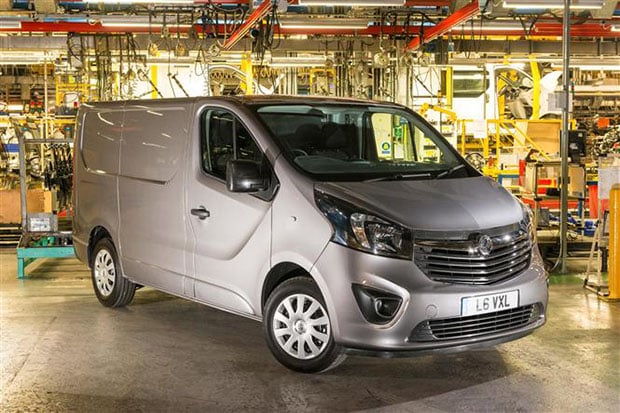Choice. It’s great having it, right? I mean the alternative’s pretty stark – an oppressive regime of being told what you can have and when you can have it is a cause people have fought against for generations. But perhaps you can have too much of a good thing?
In the car industry a tipping point is being approached – some would argue we’ve already passed it. When the plethora of makes, models, body styles and trims is so complex that even hardened car anoraks struggle to follow what’s what, what hope does a regular consumer have of finding the car that suits his or her needs perfectly?
Remember the good old days? No, me neither, but in the Post-WWII years, car manufacturers generally offered a choice of a small saloon, a larger alternative and, occasionally, a sports car. Sure, the then British Motor Corporation combine of Austin, Morris, et al, churned out umpteen differently-sized versions of a theme in a manner that’s now commonplace, but it wasn’t the norm in the 1950s.
Running the risk of sounding “Faragesque”, Europe is to blame for this exponential increase in automotive variety. Hear me out before fearing I’ve switched to the purple side.
Before the European Community’s common market was formed, manufacturers essentially built cars for their home nations. If overseas buyers were willing to part with a hefty wad of extra cash in local taxations for the privilege of owning something a little different, then so be it.
When those import taxes were removed, larger swathes of car buyers across the continent bought foreign-built models, gradually diluting national idiosyncrasies in the quest of producing models with a pan-European appeal.
Where once you might have chosen a Fiat for its compactness, a Mercedes for its peerless engineering, a Citroen for its comfort or a Rover because you liked sitting at the roadside with steam billowing out from under the bonnet, trends increasingly converged.
That’s not to say some cars are better in particular areas than others, but with each new model, the gap between the best and worst is constantly reduced and thus they become similar.
It’s not just between different car brands there’s growing similarity – venture into an Audi showroom and you’ll be greeted by four different saloons that look so similar you’ll need a doctorate in observation skills to spot the differences. If they’ve had the tell-tale badge delete option, you’re on a hiding to nothing.
Rather than simplify things to help customers out, car manufacturers are looking to fill every imaginable market niche to keep the balance sheets looking healthy and shareholders happy. This means more models and potentially more confusion.
Visit a BMW showroom and you’ll spot the 3 Series Gran Turismo. It’s a five-door hatchback version of the four-door 3 Series saloon. Okay, there’s merit in that idea. But wait, what’s that? Why, that’s the new 4 Series Gran Coupe. It’s a five-door hatchback version of the 4 Series coupe, which in turn is a two-door version of the 3 Series four-door saloon. Erm. And that one? Oh yes, that’s the new X4, a five-door hatchback version of the X3 4×4. Aaah, so that one makes more sense because you can get it with four-wheel drive? Yes, an argument that holds water until you spot the 3GT and 4GC can also be specified in that format too. My head hurts.
It’s not just in the automotive industry where such a choice explosion is ricocheting product shrapnel across a greater number of shop shelves. Apple was once a model of product purity, its iPhone being launched in one colour and two memory sizes. Now there’s not only a choice of colour, but a choice of plastic or glass cases. And if rumours are true about iPhone6, it’s going to become even more confusing as there’s allegedly a regular-sized version and a larger phablet (a hideous portmanteau of phone and tablet in case you’ve yet to hear someone utter that bile-curdling phrase). So the larger model will be bigger than the normal iPhone but smaller than the iPad Mini, which in turn is a smaller version of the regular iPad. Pass the Anadin.
For most people the level of choice is something that clever marketing people convince them they need. Cars of different sizes will be required depending upon individuals’ requirements, but do the vast majority of car buyers really care that their model of choice comes with five alternative diesel engines, three petrols, a trio of gearbox iterations and six trim levels? I suspect the answer is a resounding no. They want something that’s safe, economical and makes them feel good in most instances. The rest isn’t choice, its noise.
Maybe Henry Ford had it right all along – you could buy his eponymous Model T in any colour you liked, so long as it was black. I’ll save the story of how that’s actually an automotive myth for when your insomnia’s really bad.
Keith Jones is a self-confessed car geek from Lincoln with over 30,000 car books, magazines and sales brochures being testament to that. Keith took his first steps in motoring writing launching his blog in 2011, contributing to Autocar, BBC 5 Live, CBS and MSN in the following months. In 2013, he gave up his teaching career to become a staff writer at Parkers.






